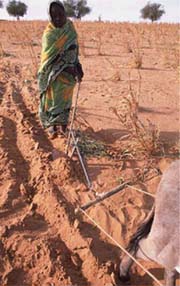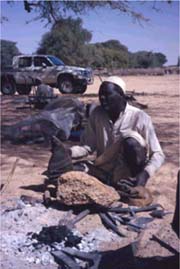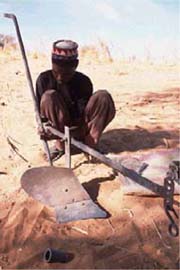Difference between revisions of "How to Make a Donkey Plough"
Alessandro (talk | contribs) |
|||
| (One intermediate revision by one other user not shown) | |||
| Line 98: | Line 98: | ||
'''This Howtopedia entry was derived from the Practical Action Technical Brief ''Energy from the Wind''. <br />To look at the original document follow this link: http://practicalaction.org/?id=technical_briefs_agriculture'''<br /> | '''This Howtopedia entry was derived from the Practical Action Technical Brief ''Energy from the Wind''. <br />To look at the original document follow this link: http://practicalaction.org/?id=technical_briefs_agriculture'''<br /> | ||
| − | ==''' | + | =='''Useful addresses'''== |
'''Practical Action''' | '''Practical Action''' | ||
The Schumacher Centre for Technology & Development, Bourton on Dunsmore, RUGBY, CV23 9QZ, United Kingdom.<br /> | The Schumacher Centre for Technology & Development, Bourton on Dunsmore, RUGBY, CV23 9QZ, United Kingdom.<br /> | ||
| Line 106: | Line 106: | ||
=='''Categories'''== | =='''Categories'''== | ||
| − | + | ||
| − | + | [[Category:Easy]] | |
[[Category:Less than 50 US$]] [[Category:One Person]] [[Category:Local Technology]] [[Category:Arid Climate]] [[Category:Monsoon Climate]] [[Category:Agriculture]] | [[Category:Less than 50 US$]] [[Category:One Person]] [[Category:Local Technology]] [[Category:Arid Climate]] [[Category:Monsoon Climate]] [[Category:Agriculture]] | ||
| + | [[Category:Requested translation to Spanish]] [[Category:Requested translation to French]] | ||
Latest revision as of 10:17, 9 December 2009
Contents
The Donkey Plough
Short Description
- Problem:
- Idea:
- Difficulty:
- Price Range:
- Material Needeed:
- Geographic Area:
- Competencies:
- How Many people?
- How Long does it take?
The Donkey Plough
The Practical Action donkey plough was developed in Sudan in the Darfur region over a period of time where a number of trials and adaptations were made to make the design suitable for local conditions. The size and weight of the plough would be varied to suite different farming conditions.
In 1990 Practical Action's (then ITDG) work with an Oxfam animal traction project in Sudan was rekindled after suffering from logistical difficulties. The project was based in the Northern part of the country in Darfur province around Kabkabiya.
This work has led onto the current Darfur Integrated Rural Livelihoods Programme which covers activities such as; Training of farmers in agricultural techniques - terracing and wadi (valley bottom) cultivation, which extend the range of crops they can grow and which make more efficient use of scarce water resources. Around 1000 women and men farmers are being trained per year, mainly by local extensionists. Strengthening of the capacities of local village committees to manage and develop agricultural and water projects. Construction of dams for rainwater harvesting, and training in dam construction, as well as improvement in the techniques of construction of tumad (shallow wells) in the wadis and the construction of haffirs (channels) for water supply. Establishing several irrigated demonstration farms. Introduction of donkey carts for transporting water - for household use, and other goods, reducing the time and drudgery of collecting water, especially for women.
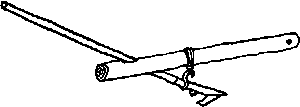
Figure 2: The traditional plough made of wood ©Practical Action
Most of the community share the problems of working with soils that have a hard crust. When the rains come, the water cannot penetrate the soil. The project officer, at the time, introduced an implement used by many farmers in Ethiopia, the wooden ard plough. This is an assemblage of wooden pieces fitted together, it is lighter than many ploughs. The traditional design of plough for the region used a single handle which passed through a log. The log acted as the main body of the plough and only a small proportion on the plough was made of metal. The plough is lighter than many plough in other part of the world due to the arid conditions and the fact that it is being pulled by only one donkey or sometimes by a camel.
The new design is based on the more traditional design but using an all-metal structure. The metal comes from scrap, which is usually obtained from old vehicles.
The Azagarfa Blacksmiths Society is part of an Practical Action project concerned with participatory technology development in the design of a donkey-drawn plough using locally available skills and appropriate materials. The blade, for example, would be made from leaf springs from old suspensions. The steel is useful as it can easily be hardened through quenching to produce a hard wearing surface.
After initial trials in the project area (Kebkabiya), this technology was scaled up and disseminated to other areas in North Darfur including Azagarfa Village,
The Azagarfa Blacksmiths Society was registered in 1998 and Practical Action (then ITDG) organised the training of its members by other blacksmiths from Kassara who were already skilled in the improved design.
Members have on to manufacture and sell the ploughs to individual farmers and farmer societies in the area.
The conditions in which the ploughs are manufactured are fairly basic and the tools available to the blacksmiths are limited.
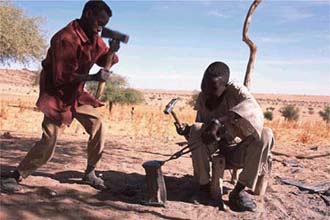
Figure 4: Hammering one of the component parts of the plough ©Practical Action
The components of the plough consist of the minimal amount of material as steel is scarce.
Practical Action has been involved the design of the harness in Sudan where improved harnesses have been introduced for ploughing and for water carrying. ITDG publishing has also produced a book on simple harnesses.
As part of the training, new harnesses were demonstrated. The wider and softer strapping will spread the load and reduce rubbing thus preventing the animal from developing sores.
The donkey plough demonstrates the relationship between the different aspects of Practical Action's work from the adaptation of a traditional technology to the development of an intermediate technology and brings together farming, metalworking and the production of improved harnesses.
Useful Addresses
Practical Action
Sudan P.O. Box 4172
Khartoum Central
1114 Sudan
Tel: + 249 11 444 260 419
Fax: + 249 11 472002
E-mail: info@practicalaction.org.sd
World Association for Transport Animal
Welfare and Studies - TAWS
Old Stocks
62 The Avenue
Worminghall
Aylesbury, Bucks
HP18 9LE
United Kingdom
Mr. Hovell
Tel: 01844 339327
Robin Gripp
Tel: 024 7634 3400,
E-mail: info@taws.org
Website: http://www.taws.org
References and further reading
• Metalworking, Practical Action Technical Brief
• The Harnessing of Draught Animals by Ian Barwell & Michael Ayre, ITDG Publishing, 1982
• Donkeys, Mules & Horses in Tropical Agricultural Development, University of Edinburgh 1991
This Howtopedia entry was derived from the Practical Action Technical Brief Energy from the Wind.
To look at the original document follow this link: http://practicalaction.org/?id=technical_briefs_agriculture
Useful addresses
Practical Action
The Schumacher Centre for Technology & Development, Bourton on Dunsmore, RUGBY, CV23 9QZ, United Kingdom.
Tel.: +44 (0) 1926 634400, Fax: +44 (0) 1926 634401
e-mail:practicalaction@practicalaction.org.uk web:www.practicalaction.org

